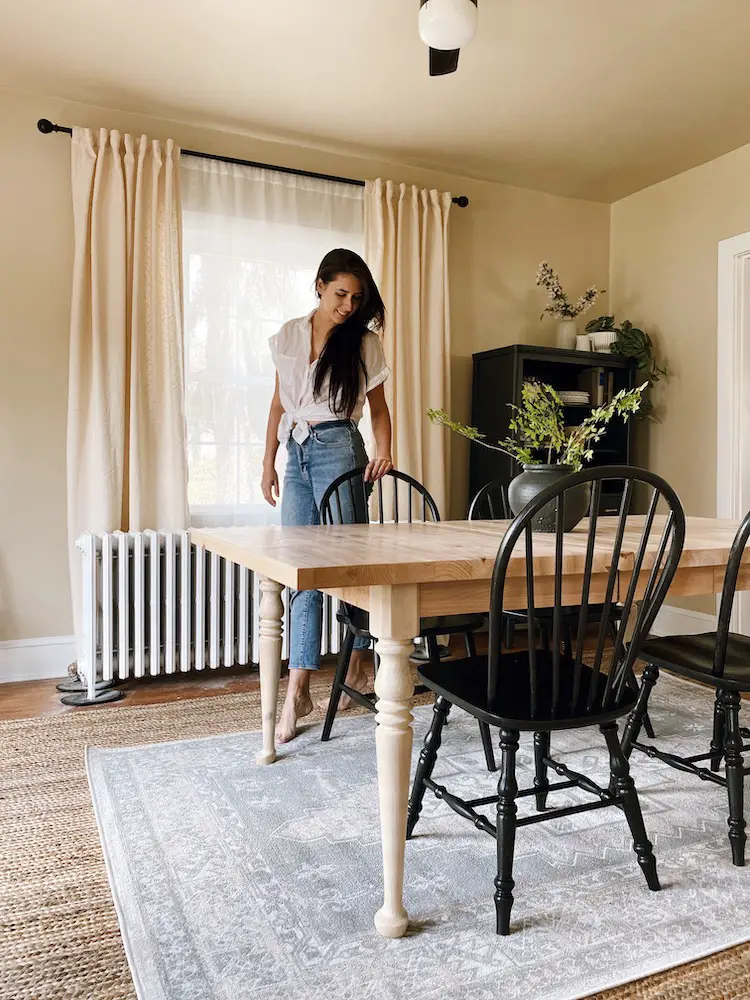Special Dining Room Table Legs to Change Your Eating Area
Wiki Article
A Detailed Look at Table Leg Styles: Finding the Ideal Suit
Choosing the best dining table leg style is important for both visual allure and practical performance. For those with bigger tables, trestle legs make sure durable support, whereas barrette legs introduce a mid-century modern ambiance with their minimalist layout. The x-shaped legs mix contemporary design with boosted stability.Conventional Four Legs
Amongst the various kinds of table leg designs, the typical four-leg layout stays a classic choice for several homes. This classic configuration uses a harmonious blend of capability and aesthetic appeals, making it a perennial fave. Four legs offer well balanced support, making certain the table stays stable and with the ability of bearing considerable weight. This is particularly useful for homes that often organize large celebrations or use their table for several purposes, such as job or crafting.From an aesthetic viewpoint, the traditional four-leg design can be quickly adapted to various interior designs. Whether crafted from timber, steel, or a combination of products, these legs can be elaborately sculpted, smooth and minimalistic, or anything in between. Their flexibility allows them to complement both rustic and modern settings perfectly.
Moreover, the straightforward framework of the four-leg style helps with convenience of motion and positioning within a space. Unlike more facility bases, this style reduces obstructions, providing sufficient legroom for diners. In summary, the typical four-leg eating table leg design marries enduring beauty with functional functionality, making it a sharp choice for those looking for both kind and function in their eating furniture.
Pedestal Base
Often celebrated for its sophisticated and space-efficient design, the pedestal base is a recognized option to the traditional four-leg arrangement in dining table leg designs. Without edge legs, restaurants are afforded better liberty of motion, making it a suitable choice for round and oblong tables that promote more intimate and inclusive gatherings.The central column itself offers a canvas for intricate layouts and artistic expressions, including an element of aesthetic rate of interest underneath the table. In recap, the stand base integrates capability with design, making it a refined and useful choice for varied eating settings.
Trestle Legs
Trestle legs give a durable and timeless foundation for eating tables, defined by their horizontal cross-bracing and sturdy assistance beams. Stemming from medieval times, this layout has progressed yet kept its crucial framework, making it a seasonal fave in both standard and modern setups. The resource central trestle beam, usually sustained by two or more upright messages, offers outstanding stability, enabling for larger table sizes without the demand for extra legs.A considerable benefit of trestle leg tables is the enough legroom they offer. Unlike tables with 4 edge legs, the absence of obstructions at the table's edges gives unblocked area for chairs and diners, boosting comfort and ease of access. This makes trestle tables suitable for accommodating larger gatherings, whether in an eating room or a banquet hall.
The visual flexibility of trestle legs is significant. Offered in a variety of materials such as timber, steel, and composite, they can be completed to complement a wide variety of indoor designs. From rustic farmhouse to streamlined modern styles, trestle legs can this page be customized to fit specific preferences. Their long-lasting charm and practical advantages make trestle legs a compelling option for those looking for both style and practicality in their table.
Hairpin Legs

The charm of hairpin legs depends on their simplicity and adaptability - dining room table legs. Readily available in a variety of materials, including steel and brass, they can be completed in numerous colors to enhance different indoor styles. Whether coupled with a rustic wood table top or a contemporary glass surface, barrette legs easily blend performance with a touch of classic charm
Toughness is another notable attribute of hairpin legs. Regardless of their delicate appearance, these legs are engineered to bear substantial weight, ensuring the eating table continues to be secure and safe and secure. In addition, they are fairly simple to set up, making them a prominent selection for do it yourself fanatics and expert furniture manufacturers alike.
X-Shaped Legs

Constructed from materials such as steel, timber, or a mix of both, X-shaped legs can be tailored to match numerous layout preferences. Steel legs commonly lend a streamlined and industrial feeling, suitable for loft-style homes and modern eating spaces.
Furthermore, the design behind X-shaped legs makes certain even weight distribution, reducing the danger of wobbling and improving durability. This makes them especially fit for bigger dining tables that require extra assistance. In essence, X-shaped legs mix sensible engineering with modern appearances, making them a classic selection for varied eating atmospheres.
Verdict
A comprehensive understanding of eating table leg styles reveals the distinctive qualities and benefits of each style. Typical 4 legs use security and timeless charm, while pedestal bases give legroom and a structured appearance. Trestle legs ensure durable assistance for larger tables, and barrette legs present a mid-century modern-day visual. X-shaped legs combine contemporary layout with boosted stability. Choosing the proper leg style guarantees both functional and visual complete satisfaction in any type of eating area.Report this wiki page